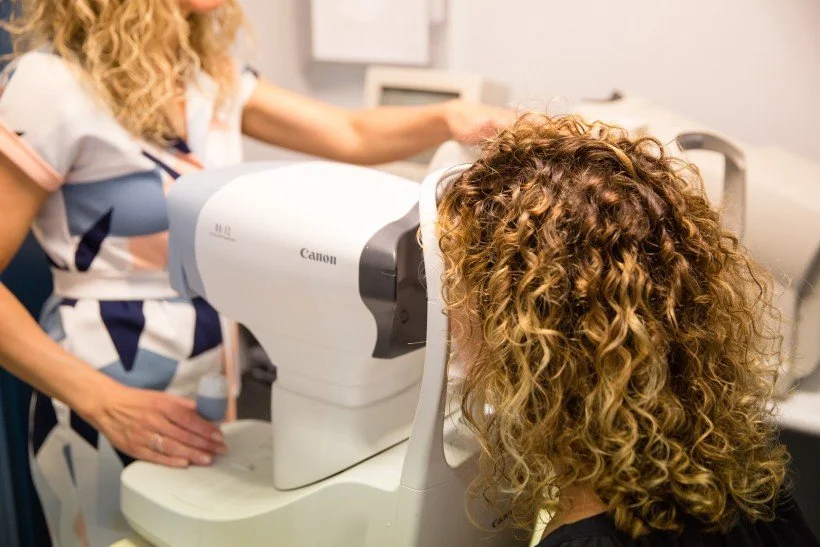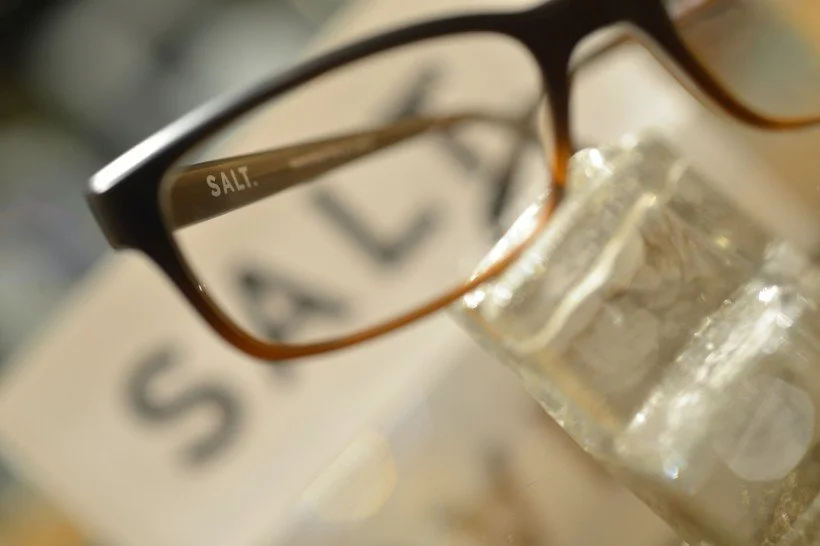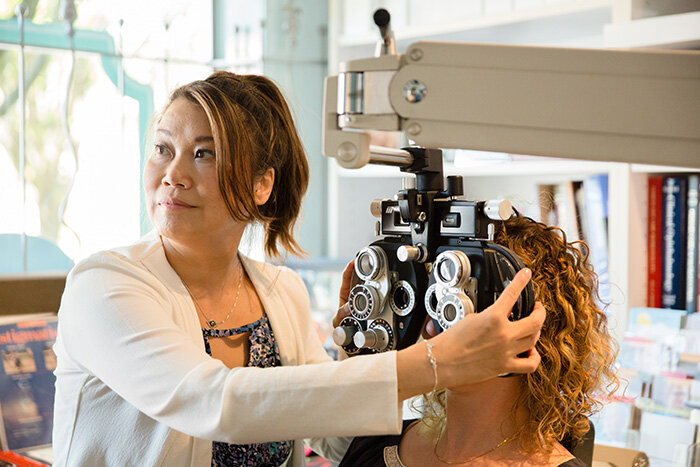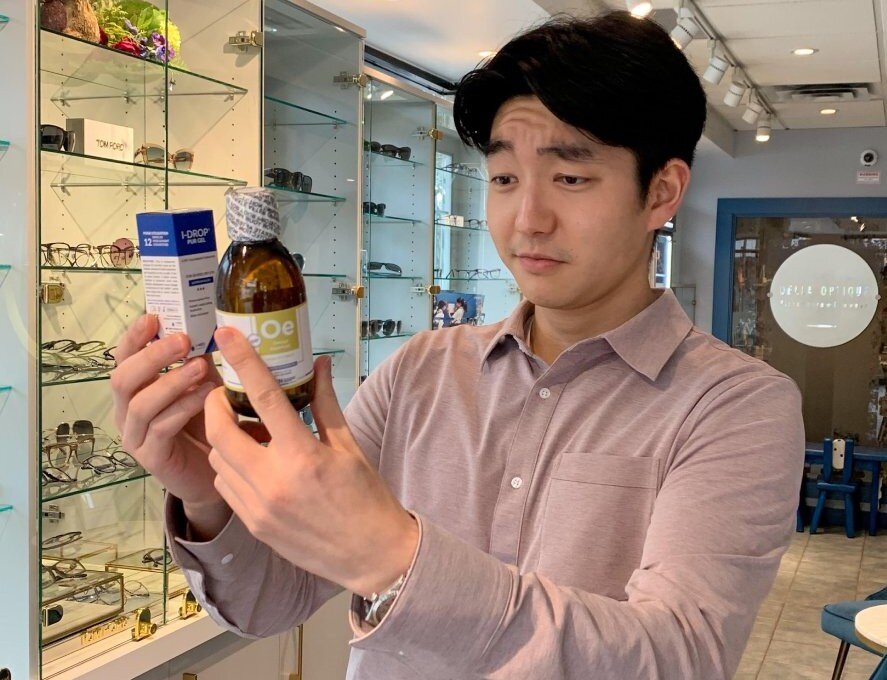What Does 20/20 Vision Mean?
Kim preparing a patient for routine vision testing at Della Optique.
Whenever you visit your optometrist for an annual eye examination, the optometrist may mention that you have 20/20 vision, 20/30 vision or maybe some other ratio of vision. But what do all these numbers resulting from an eye health exam signify? And importantly, how does this relate to the final prescription that is printed out and handed to a patient?
In this blog post, I hope to simplify what 20/20 vision means, and thereby give others a better understanding of their visual health.
A typical letter chart used in eye health exams.
What Is 20/20 Vision?
First of all, 20/20 vision means that the vision in the evaluated eye is classifiable as normal vision. If you have 20/30 vision, this means that the sharpest possible vision an individual can achieve with corrective lenses is equivalent to what a person without any form of refractive error would be able to see clearly from a distance of 30 feet away.
Yes, you say, but what does 20/20 really mean? 20/20 refers to the distance from which a person with “normal” (or corrected) vision can see an object that should be clearly visible when viewed at twenty feet.
In other words, if you are standing about six meters (around twenty feet) away from an eye chart and your vision in that eye yields a score of 20/20, then you have normal visual acuity.
In many office settings, having a twenty feet long room is not an ideal use of commercial real estate. Thus, most optometrists will use a mirror system to check visual acuity. This allows the optometrist to double the room size by utilizing their dear friend, optics.
The phoropter used for annual eye health exams at Della Optique.
So, why the numbers like 20/20? Using numbers in this manner derives from the Snellen eye chart, introduced by Hermann Snellen in 1862 as a simple way for optometrists and ophthalmologists alike to test visual acuity. Namely, how well someone sees compared with others who are normally sighted under typical conditions.
Outside of North America, depending on the country and their standard units of measurement, eyecare providers can measure vision in various forms. For example, if the country’s measuring unit is based upon meters, their goal of normal vision would be 6/6 vision (in meters) instead of 20/20 vision (in feet).
When one gets older he or she can expect changes to the eye. One of the changes that occurs to many individuals is a condition called presbyopia. To get an in-depth explanation of what presbyopia is, please visit my blog post, “Do I need reading glasses?” here.
Prescription Eyeglasses
When presbyopia manifests, an individual who may have had 20/20 vision at all distances will start to have more difficulty reading fine print up close. They may still have 20/20 vision at distance, however, their near visual acuity may decrease to 20/30 or even 20/40 vision.
To correct for this, a pair of properly fit prescription eyeglasses can allow the individual to regain their normal vision of 20/20.
A pair of SALT corrective reading glasses in Kitsilano, Vancouver.
About 35% of all adults have 20/20 vision without glasses or contact lenses, while the remainder of the population may have some form of visual difficulty. With correction, about 75% of adults can achieve 20/20 vision. Due to the nature of some ocular conditions, there may be other limiting factors for not achieving 20/20 vision.
For example, if an individual had a lazy eye during childhood or if an individual has a cataract in either eye, the vision may be limited even with the perfect pair of prescription glasses.
With so many variables at play regarding ocular health, it is advisable that you get tested by a registered Doctor of Optometry who will have the requisite training in identifying and treating all manner of conditions of the eye.
Get Tested!
To find out if you have 20/20 vision or to see if you need any form of vision correction, one of our friendly optometrists will be more than happy to provide an eye examination. Here’s a list of the testing components included with your exam at Della Optique.
Visit our online booking system to book your next eye exam here.
You may also like:









